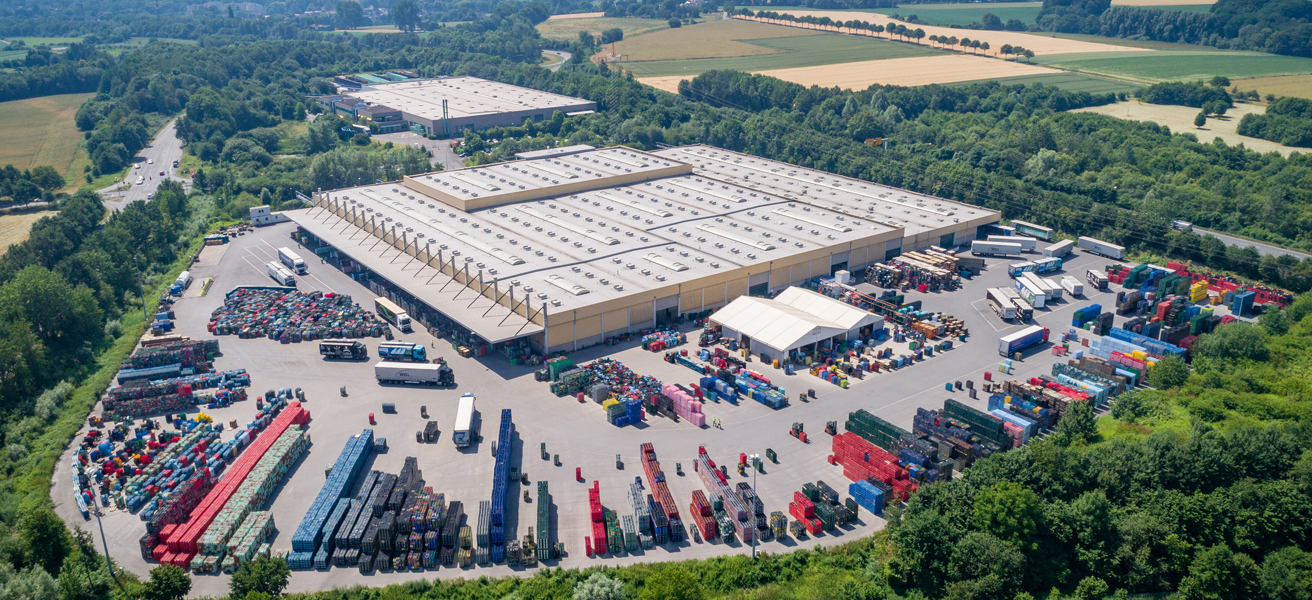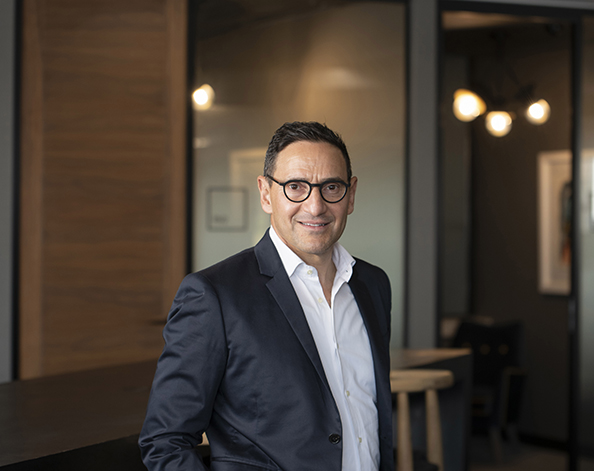Watch part 1
Highlights from presentations by JLL's Tom Waite, GXO Logistics' Charles Pease, Eastdil Secure's Eric Jansen and Investec Property Fund's Darryl Mayers and Andrew Wooler.
Highlights from presentations by JLL's Tom Waite, GXO Logistics' Charles Pease, Eastdil Secure's Eric Jansen and Investec Property Fund's Darryl Mayers and Andrew Wooler.
Watch part 2
In this panel discussion, experts from JLL, UREP, GXO Logistics, Eastdil Secured and Investec Property Fund explore the opportunities and challenges facing the Euro logistics real estate market.
Asset classes well into their stride of outperformance are an age-old conundrum for investors: capture the opportunity or stay on the side-lines?
The European logistics property sector is one such asset class firmly on investors’ radar due to its unprecedented growth rally that continues to be fuelled by the fallout from the pandemic. This was the focus of a Pan-European logistics conference, hosted by Investec Property Fund. The conclusions reached by industry experts provide compelling reasons to jump in.
“It’s a fantastic time to be involved in European logistics. Almost all of the metrics are at record levels, be that demand, vacancy rates, rents, and yields, with the strong market fundamentals and tail winds looking set to continue,” said Tom Waite, Executive Director, EMEA Logistics & Industrial Capital Markets, JLL.
With that bullish introduction as the baseline, can things get any better? There are fundamental, fascinating reasons to believe they can.
Listen to podcast
Investec Property Fund's joint CEO Andrew Wooler talks to Jeremy Maggs about what's fuelling the boom in the European logistics property sector. Listen in at 10:06.
E-commerce has reached a tipping point
The trend towards online shopping in Europe has been supercharged by the pandemic. As evidence, Waite put up a staggering graphic during the conference showing the percentage of European warehousing space taken up for the purposes of e-commerce over the last decade. The figure trended upwards from around 2% in 2009, to 12% on the eve of the Covid-19 outbreak – by the end of Q2 2021, that number had rocketed to 24%.
Eric Jansen, Managing Director at Eastdil Secured, says it’s a trend with legs: “Some of the pandemic highs of e-commerce penetration have ebbed a bit, but ultimately users have been sticky. Once you get onto these platforms and you realise how safe and useful it is to have products delivered, there’s little reason to go back, regardless of Covid-19 and its lockdowns.”
What’s more, research carried out by Jansen’s firm suggests that once a country goes beyond a 10-12% e-commerce penetration rate – now true for most euro members – the need for better online offerings triggers accelerated investment into logistical capabilities, including more floor space for their wares.
“We estimate that an additional 230 million square feet is needed over the next five years to satisfy supply chain reconfiguration and e-commerce growth,” continued Jansen.

We estimate that an additional 230 million square feet is needed over the next five years to satisfy supply chain reconfiguration and e-commerce growth.
That gap talks to a relatively underdeveloped European logistics real estate sector, particularly when compared to the US. In part, that’s because the eurozone citizens have been content to shop in-store. But the pandemic forced them online. And they’ve discovered they like it there.
What makes this trend exciting is that it’s still nascent – if European e-commerce penetration follows a similar trajectory to that seen in the US and UK, it’ll provide sustainable demand for logistics-related property.
E-commerce, however, is not the only factor stoking demand for European logistics space:
- Supply chains are moving from “just-in-time” to “just-in-case” and companies are increasing their local inventory levels to be more resilient to shocks
- Express delivery, 3rd party logistics, construction, and healthcare are all growth vectors
- Cold storage space (grocery and pharma) needs are rising as last-mile delivery grows in importance
More demand is likely to stem from the revenue-enhancing automation that new-age logistics properties offer their tenants, so says Charles Pease, Head of Real Estate Europe at GXO Logistics.
“By automating a customer's facility, we can increase their revenue by three to 10 times. Part of that uplift can be attributed to the execution of efficient reverse logistics that handles items returned by online shoppers.” This dynamic should see the outsourcing of logistics become more commonplace.
The ‘problem’ with all this demand is that there’s very little floor space left in Europe to absorb it.

An Investec Property Fund logistics warehouse in Dortmund, Germany.
In short supply
“Typically, it takes anything from 12 to 18 months to fit out a fully automated e-commerce warehouse, which is actually longer than the construction period. We're working on a lot of projects that will only be available in two to four years’ time,” continued Pease.
That comment fits into the broader context of the limited supply of European logistics property. Increasing lead times is just one factor among a raft crimping stock.
Here’s a more comprehensive list:
Record low vacancies
Mid-way through 2021, European logistics property had an average vacancy rate of 4.5%, the lowest on record. At the current uptake of floor space, most euro members have less than one years’ worth of supply left, said Waite.
Lack of land
Germany, France and the Netherlands have very little appropriately positioned and zoned land left to develop into logistics stock. Similar constraints are starting to show in northern Italy, Spain and Poland.
Zoning issues
Authorities and lobby groups perceive logistics and warehousing as environmentally and socially undesirable and, therefore, often oppose applications to have available land zoned for development.
ESG demands
Investors and customers alike are increasingly moving towards greener supply chains. That requires greater capex and time to bring suitable logistics property to market.
Labour shortages
Warehouses endowed with automation and tech need more employees with technical expertise, the likes of which are proving difficult to find, adding to leads times, says Pease.
Build to suit (BTS) v speculation
At the end of Q2 2021, 33% of the European logistics space under construction was speculative. While higher than previous years, it’s not enough to bridge the gap between supply and demand, with tenant-led BTS development still dominant.
There is potential to increase floor space by reconfiguring existing properties; going multi-story is a trend gaining momentum, particularly in urban areas. But that won’t solve the extent of the prevailing demand/supply imbalance. And if the substantial constraints highlighted above remain in place, that might be the case for a while yet.
Three reasons not to miss this investment opportunity
Pease: “I think Amazon took up something like 46% of the available space in the last 12 months. We're reaching the point where we're running out of warehousing.”
Jansen: “We're routinely seeing large, billion-plus transactions that are 10 to 15 times oversubscribed.”
Waite: “There was a record take-up of European logistics space in the first half of 2021 with nearly 15 million square metres of space newly occupied, well above the five-year average.”

I think Amazon took up something like 46% of the available space in the last 12 months. We're reaching the point where we're running out of warehousing.

There was a record take-up of European logistics space in the first half of 2021 with nearly 15 million square metres of space newly occupied, well above the five-year average.
Astute investors would be forgiven for reading such comments and thinking they’ve missed the boat. But the overriding message from the conference was that the existing market dynamics are sustainable and the investment thesis intact. For South African investors, there are three good reasons supporting that claim:
1. Rental growth
A sustained shortage of European logistics stock will manifest in higher rental income for the property owners. We’ve already seen this dynamic play out strongly in the US market – which rebounded faster than Europe thanks to their aggressive fiscal spending – and there are early signs of a similar trend on the continent.
According to a slide in Waite’s presentation, rental growth in the European logistics market is forecast to grow by 4% per annum going forward. In addition, as warehouses turn green and add more value using automation, they should be able to command higher rentals from tenants.
2. Hard currency yield + compression
Global equity market valuations are elevated, while developed market bond yields remain negligible. Compare those options to the asset class in question; it’s generating resilient cash flows, paying mid-single digit yields in hard currency, and is backed by physical assets.
That’s a tantalising proposition for SA investors wanting to diversify offshore. What’s more, the panellists believe there’s scope for current yields to compress further, resulting in capital appreciation.
3. Investment momentum gaining
According to Jansen, there is roughly $360 billon of capital seeking a home in the global real estate market. Using leverage of 65%, the figure tops $1 trillion. With uncertainty still hanging over the fate of the office sector, logistics property looks set to absorb more than its usual share of that investment pie, a boon for prices.
Given the weight of money that’s chasing the sector, the panel moderator asked Paul Rodger, Managing Director for UREP, whether the pricing arbitrage has closed. “I think it certainly has closed and we, like many of our competitors, are thinking how do we create a competitive advantage to ensure that we're not overpaying for that space?”
With new entrants flooding the sector, Rodger said that there's a lot of risks being taken that perhaps aren't fully underwritten. “I think our USP, if you like, is to properly price the risk and the opportunity in order to unlock it. So whilst that arbitrage is definitely reducing, I think there are still opportunities for us as a collective business across the regional markets to create value in it.”

I think our USP, if you like, is to properly price the risk and the opportunity in order to unlock it. So whilst that arbitrage is definitely reducing, I think there are still opportunities for us as a collective business across the regional markets to create value in it.
Why European logistics is a compelling story to SA investors
Darryl Mayers, Joint CEO of Investec Property Fund, compared the European logistics opportunity to those in our domestic property market during the panel discussion: “Even though the leverage in Europe is higher than SA LTVs (c.60% vs. c.30%) with similar 12-13% IRRs , but (with Europe) arguably at a lower risk profile that you would find in SA, we believe the traction the asset class has warrants the higher gearing.”
His Co-CEO, Andrew Wooler, added: “The [European logistics real estate] market is very competitive, very transparent, but also very stable. In Europe you've got valuations and capital leading the way. A little bit different in South Africa, where the two are typically coupled.
“And so one of the challenges [in Europe] is that you're seeing this big uplift on balance sheet, you're not seeing it come through your earnings on day one. And I think that for us, what makes it so exciting over the next three to four years, is that we think that the earnings line will start to catch up with the valuations line on the balance sheet.”

We believe the traction the [European logistics real estate] asset class has, warrants the higher gearing.

The [European logistics real estate] market is very competitive, very transparent, but also very stable.
Will demand continue to outstrip supply?
“Not a week goes by where a large European e-commerce or 3rd party logistics tenant doesn't talk to us about their struggles of finding good assets, or even just usable ones,” mused Jansen.
The question investors need to answer is whether those same tenants will still be struggling to find space in the months and years to come. The demand for European logistics space has a structural character to it in that e-commerce penetration is gaining momentum from a relatively low base. The ancillary factors boosting demand all have robust merit, too.
To be sure, development of new logistics floor space will follow. But greenfield builds face stubborn real-world constraints, while brownfield upgrades take time and investment and can only add modest amounts of additional capacity.
SA investors who gain exposure to European logistics property today won’t be getting in at the bottom. If demand keeps its nose in front of supply, which, on balance, seems likely, rental growth and the concomitant compression in yields will provide further impetus for returns.
In conclusion: the European logistics real estate sector is the place to be in 2021, and it looks set to continue into 2022 and beyond.
For more information, visit the Investec Property Fund website.
Receive Focus insights straight to your inbox

